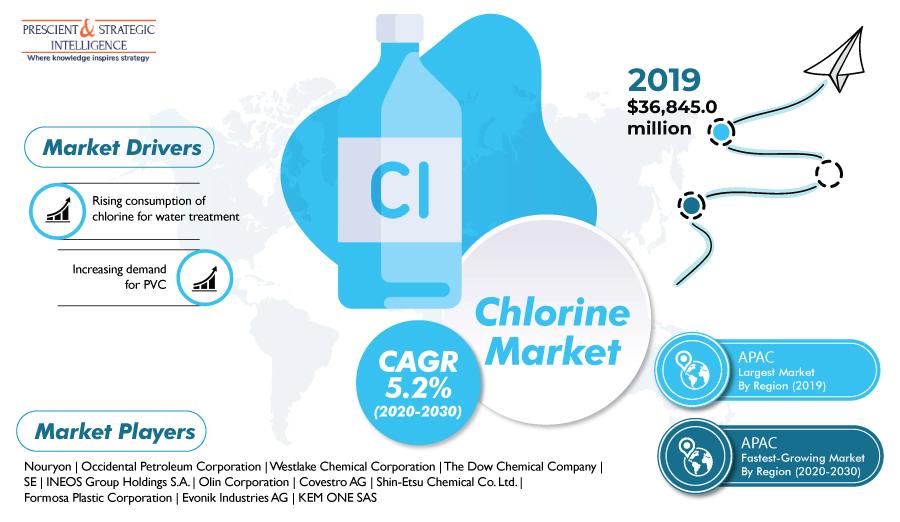How Will High PVC Demand Boost Chlorine Market Growth?

Growth drivers, such as the surging demand for treated water, primarily on account of the rising cases of water-borne diseases, and burgeoning demand for polyvinyl chloride (PVC), owing to the widening application base of this plastic, will help the chlorine market advance at a CAGR of 5.2% during the forecast period (2020–2030). According to P&S Intelligence, the market revenue stood at $36,845.0 million in 2019, and it will reach $63,121.6 million by 2030 .
The rising demand for treated water, especially in developing countries, owing to the mounting public awareness about the harmful effects of untreated water, will accelerate the global demand for chlorine, because it can kill bacteria and other pathogens in water. Additionally, the increasing concerns about the growing prevalence of water-borne diseases, such as cholera, Hepatitis A, Hepatitis B, and Typhoid, in emerging economies, such as Brazil, India, and Thailand, will also facilitate the market growth.
Besides, the burgeoning consumption of PVC in the building and construction, medical, and automotive industries, due to its high viscosity and improved thermal stability during the manufacturing process, will also catalyze the chlorine market growth, globally. Chlorine is used in the chlorination process required for manufacturing PVC, which is used in siding and piping applications in the building and construction sector, non-breakable containers in the medical industry, and parts of windshield systems in the automotive sector.
The end use segment of the chlorine market is categorized into pesticides, pharmaceuticals, plastics, pulp and paper, water treatment, and others, such as chemicals, paints and coatings, and textiles. Under this segment, the water treatment category is expected to exhibit the fastest growth in the forecast years, due to the surging public and government concerns over water safety. Wastewater treatment plants use chlorine as a disinfectant to provide clean water for sanitation and safe drinking water.
- Авто, мото
- Кейтеринг
- Досуг, развлечения
- Животные
- Красота, здоровье
- Образование, репетиторы
- Спорт и тренеры
- Строительство и ремонт
- Товары и магазины
- Туризм и отдых
- Финансы и страхование
- Литература
- Музыка
- История
- Политика
- Религия
- Искусство
- Кино
- Театр
- Хорошее здоровье
- Аксессуары
- Бизнес
- Разное


